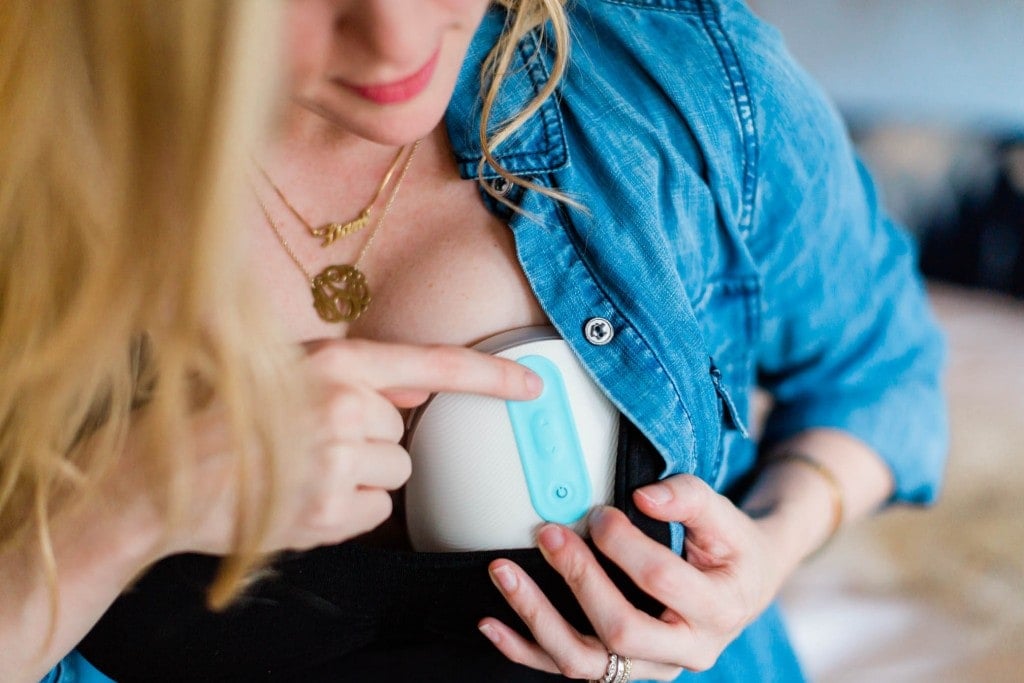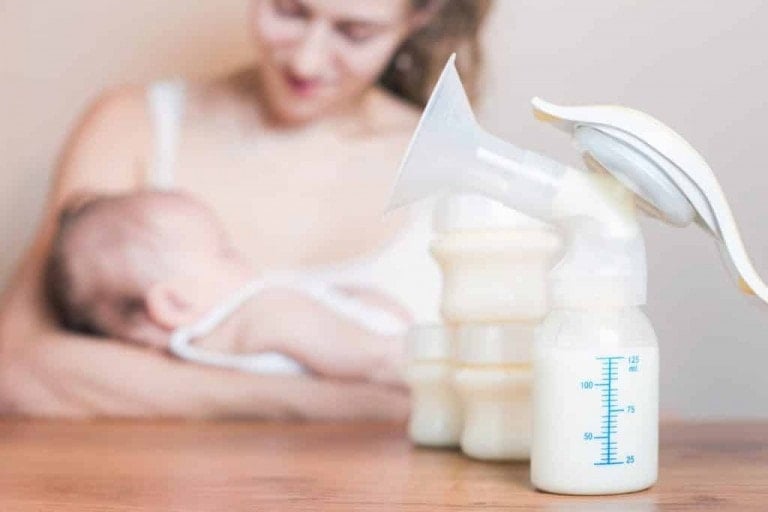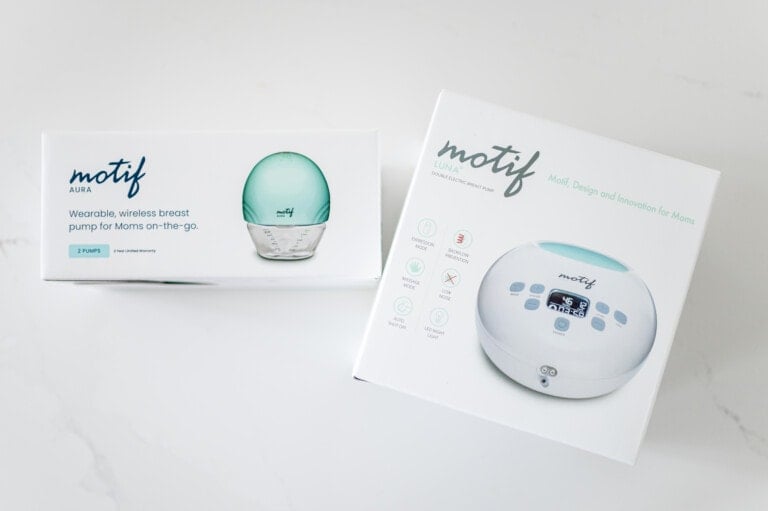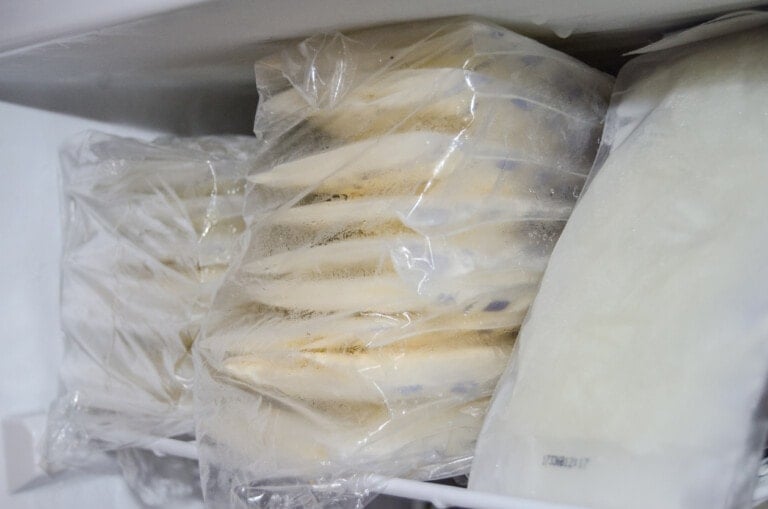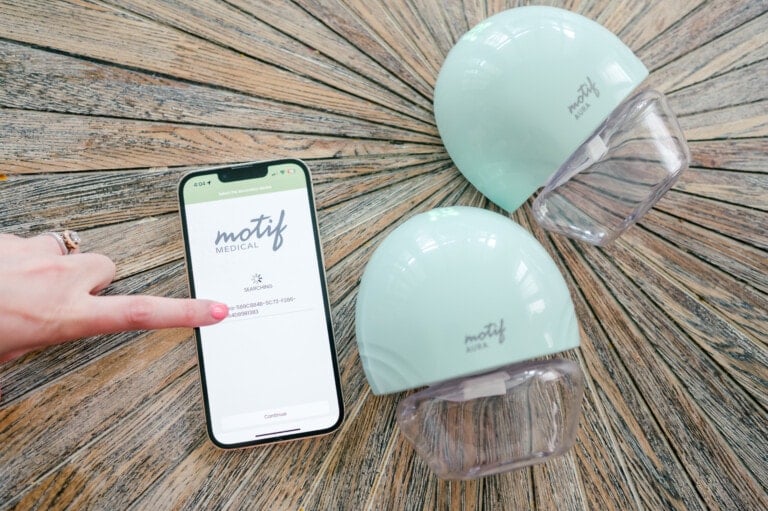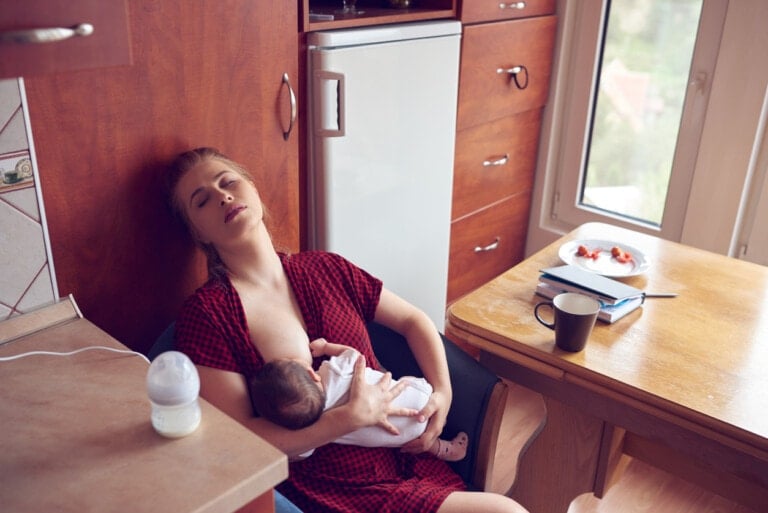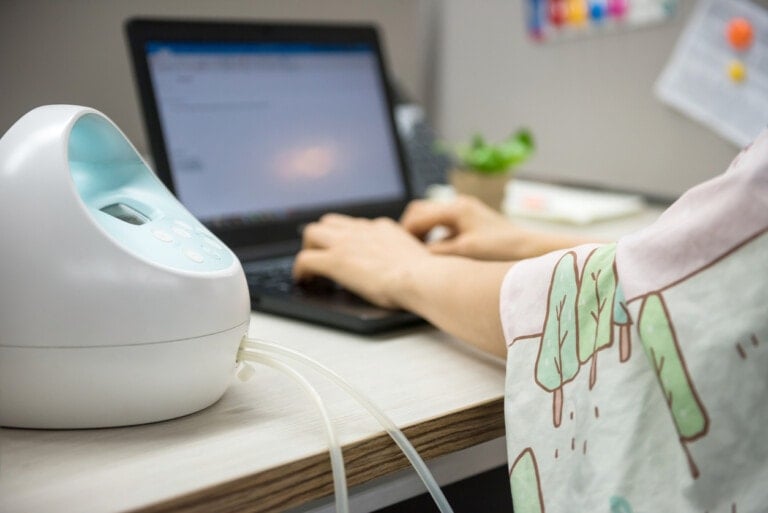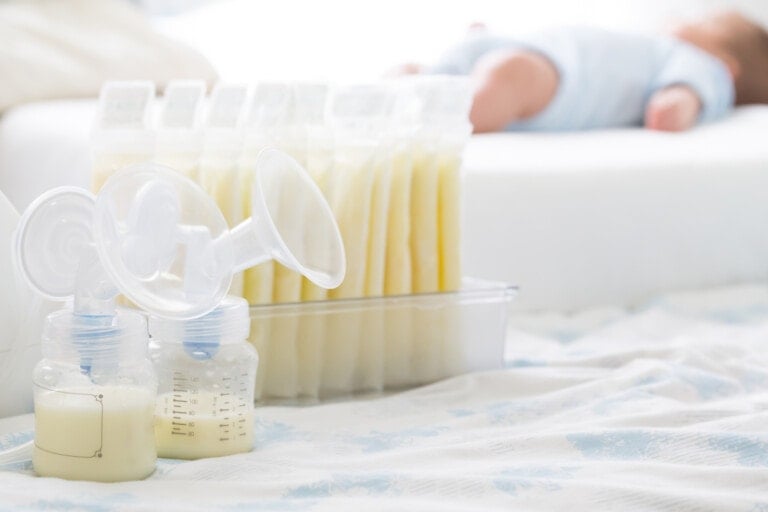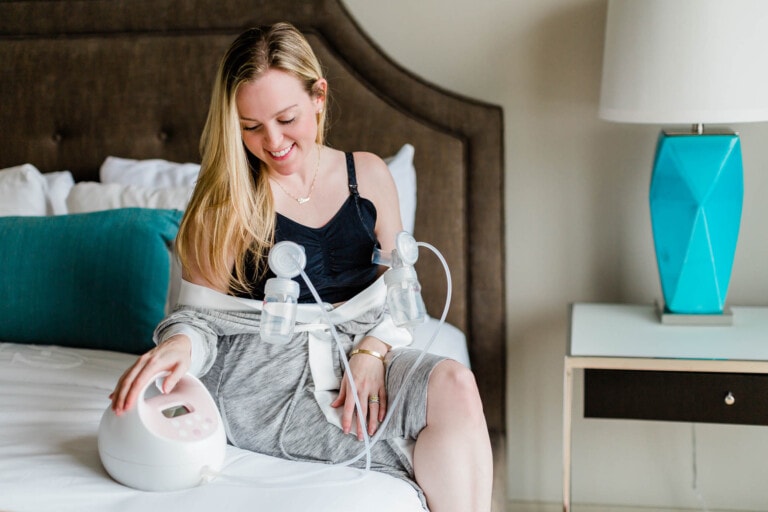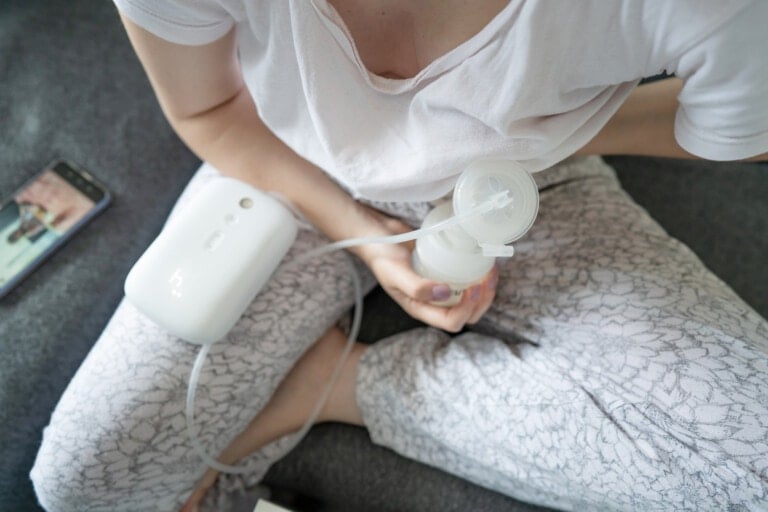Over the years, I’ve been around a lot of breast pumps. I’ve assembled them, sterilized them, used them personally when I had my son, and I’ve helped mothers learn how to use them. Pumping is a common topic that I cover with my clients as a postpartum doula. And having helped hundreds of families with their newborns, I know which pumps are the best breast pumps. But before you go deciding on which is the best breast pump for you, it’s important to understand the different types of breast pumps and know what to look for.
Types of Breast Pumps
There are four different types of breast pumps:
1. Manual breast pumps:
These breast pumps are operated by hand.
- Pros:
- They are lightweight, small, portable, and easy to store.
- They are great because you can use them to pump anytime and anywhere.
- They are also inexpensive.
- Cons:
- With manual breast pumps, you will be doing all of the work. They have a lever pump or bulb suction for you press together and squeeze repeatedly to extract your breastmilk.
- This can be tiring for you and your hands, so you may not get as much milk as you would with an electric breast pump.
If you plan on pumping regularly for your little one, I wouldn’t recommend this style of a breast pump for you. A manual breast pump is a good option for occasional pumping sessions, especially when on the go.
2. Battery-operated breast pumps:
These breast pumps are similar to electric breast pumps because they do the pumping for you, however, they use a battery that you either need to charge or continue to purchase to operate.
- Pros:
- A battery-operated breast pump is great for mothers who need their pump to be portable.
- They are used and recommended by mothers who have to travel or commute a lot for work.
- They are great because you don’t have to do the manual pumping yourself and you also don’t have to be tethered to an electrical outlet for pumping sessions.
- Battery-operated breast pumps are usually small, portable, and fairly easy to use.
- Cons:
- Some battery-operated pumps have a bad reputation for their batteries wearing down quickly.
- They are recommended if you only believe you’ll pump occasionally or once a day since their battery life might not last long.
- Because they are operated by batteries, they are typically not as strong as an electric breast pump that plugs in.
- They’re not recommended for mothers who plan on regularly or exclusively pumping their breastmilk because they do not stimulate milk production enough to build a healthy milk supply. This is why it is still recommended to put your baby to the breast for most feedings.
- They need to be recharged or have their batteries replaced, which can be time-consuming and costly. If your pump requires replacement batteries, you’ll need to keep some on hand wherever you are.
A battery-operated pump is a good option for mothers who only need to pump occasionally (once a day or less) and who do not want to manually pump their breast milk.
3. Single-electric breast pumps:
A single electric breast pump is a pump that you can plug into a power source to operate and express your breastmilk one breast at a time without doing it manually.
- Pros:
- Electric pumps are stronger and can get more milk with minimal effort.
- They are powerful so they can be used to help establish, maintain, and increase your milk supply.
- They are less expensive than double-electric breast pumps.
- Cons:
- You can only pump one breast at a time so it doubles the amount of time to pump.
- They are larger than manual or battery-operated pumps.
- They require you to be near a power source for every pumping session.
If you need to pump often or exclusively pump for your child, an electric pump is a great option.
4. Double-electric breast pumps:
Double electric breast pumps are very popular because they are powerful and they allow you to pump both breasts at once without having to do it manually.
- Pros:
- This is an efficient option because you can pump both breasts at once which can save you a lot of time.
- Electric pumps are stronger and can get more milk with minimal effort.
- They are powerful so they can be used to help establish, maintain, and increase your milk supply.
- Cons:
- Double-electric pumps are larger than a manual or battery-operated pumps.
- They require you to be near a power source for every pumping session.
- These are typically the most expensive options.
If you need to pump frequently or exclusively, this is the type of pump that is recommended for you.
Closed-System vs. Open-System: What’s the Difference
People don’t normally notice these terms when they first start looking at breast pumps. Once they have decided on the type of breast pump they need, they start looking at the features. These are important terms to know and understand when looking at the features before you make your breast pump selection.
Closed-system pump: A closed-system breast pump has a barrier that does not allow your breast milk to come in contact with the pump’s tubing. This means that your milk goes straight from your breast to the bottle. This is a good thing because it is considered the most hygienic. It can also be very difficult to clean and sterilize the tubes with milk inside them. They are also called “overflow protection.”
Open-system pump: An open-system breast pump doesn’t have a barrier between the milk and the pump. Your breast milk flows through the tubing and other small pieces into the bottle. If the pumping kit and tubing are not cleaned and dried properly it can create an issue. Water or your breast milk can potentially get into the pump and break the motor. Open-system pumps are usually less expensive than closed-system breast pumps.
What to Look For
When researching the best breast pumps, some other things you might want to consider before making your selection are:
Weight:
How much does the pump weigh? If you know that you’ll have to commute or travel a lot for work, you’ll want to consider what you’ll be bringing with you since you’ll have to pump every so many hours. A lightweight pump would be recommended.
Portability:
Is it easy to transport and store away? How many pump parts are there and are they all together bulky? Also, will you need to pump in the car or on a plane, etc.? A battery-operated pump might be the best breast pump for you if you can’t be near a power source. Just be sure to check how long the battery-operated pump lasts on a single charge and if it comes with a rechargeable battery or standard batteries. Another good thing to check is if the pump has a DC power adapter so that it can be charged and used in a vehicle.
Sound:
Are you going to be around other people during your pumping sessions? Do you want to pump discretely? Some breast pump motors are quieter than others so look for a pump that has a quiet motor.
Strength of suction:
Do you already know that you have a slow letdown reflex? Do you need help getting your breast milk to flow? Or maybe need help fully emptying your breasts? Do you want your pumping sessions to be faster? If so, you should look for a pump with stronger suction.
Customization:
For comfort, having the ability to customize the settings on the pump, like the suction strength and speed, is a very nice feature. The more you can mimic your baby’s feeding style, the easier your pumping sessions will be.
What’s included:
Look to see if there are any other pump parts that you need to purchase in addition to the breast pump. Or do they all come together in a kit?
Wearable:
Do you prefer to not have any tubing or bottles and be completely hands-free when pumping? Do you have a big family and need to save on time. Then a wearable pump might be the best breast pump for you.
Insurance:
Look to see which breast pumps will be covered by your health insurance policy. As of late 2012, private health insurers in the United States must cover breast pumps under the Affordable Care Act.
Cost:
It is recommended to use your insurance to get your breast pump. But maybe you need a second one for the office. Research which breast pump serves the purposes that are most important to your lifestyle that, and that also fits within your budget.
Warranty:
Unfortunately, breast pumps are non-returnable. However, all breast pumps come with a warranty through their manufacturer. Look to see if the warranty differs for the pump motor and the pump parts.
Here are our Chick Picks, the best breast pumps on the market right now.
Best Breast Pumps
1. Spectra S2
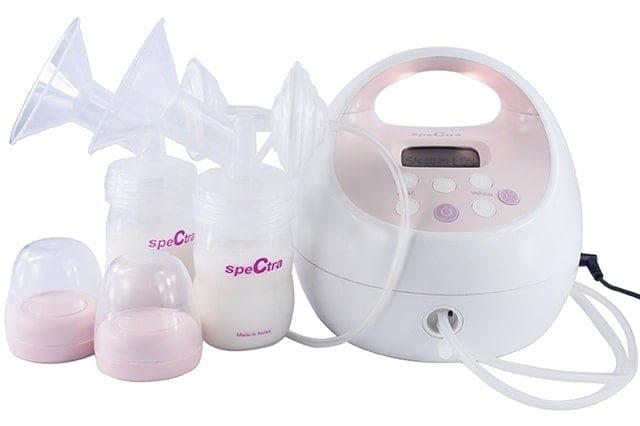
The Spectra S2 is a hospital-grade, double electric breast pump that weighs just under three pounds. It has 12 different suction levels for you to choose from to customize your pumping sessions including a massage mode, letdown mode, and expression mode. This customization helps you mimic your baby’s feeding style. I love that it has an automatic timer to help tired mothers pump for only the amount of time required. The motor is also much quieter than other pumps on the market which every mother can appreciate. It also has a night light. These two things make nighttime pumping easier on mom and won’t wake up the baby.
The Spectra S2 has a closed-pump system and all the parts that come into contact with breast milk are BPA/DEHP free. If you’re wondering what the difference is between the Spectra S1 and S2; the S2 is the pink model and the S2 must be plugged into a power source to operate.
2. Motif Luna
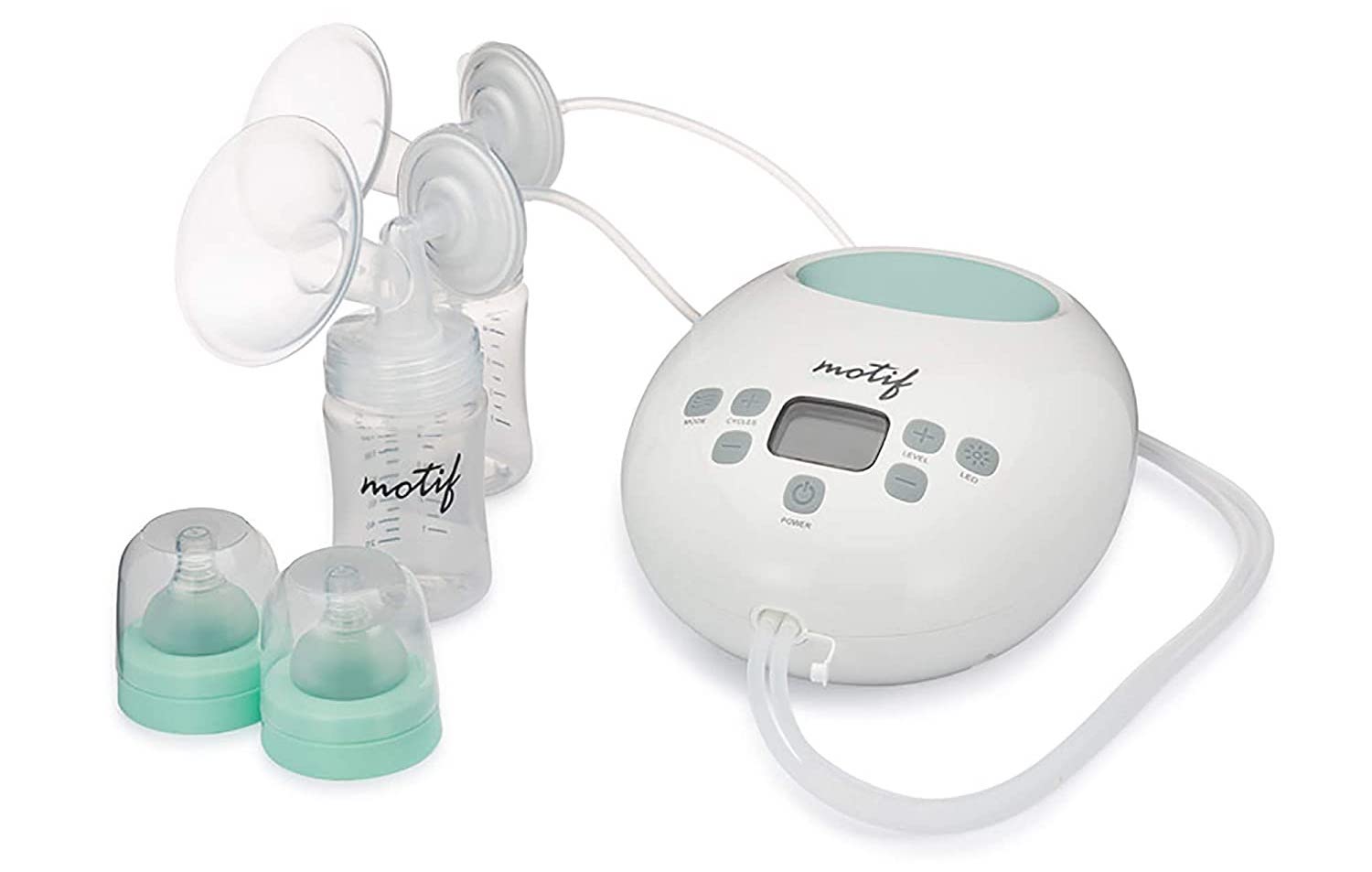
We recently did a full review of the Motif Luna and we absolutely love it! It’s very lightweight (weighing only two pounds), it has an extremely quiet motor so you don’t have an obnoxious sound to listen to when you pump, the screen is easy to read day or night, it has a timer, and I love that it can be plugged in or battery-operated. It’s a great option if you have to regularly pump but also have to travel or commute for work. One of the biggest reasons why it’s so popular, five out of six moms say they’re able to pump more milk in less time with the Motif Luna. Who doesn’t want to save time?!
It is a double electric pump with a closed system. It’s easy to use and has strong, but comfortable, suction.
3. Medela Freestyle
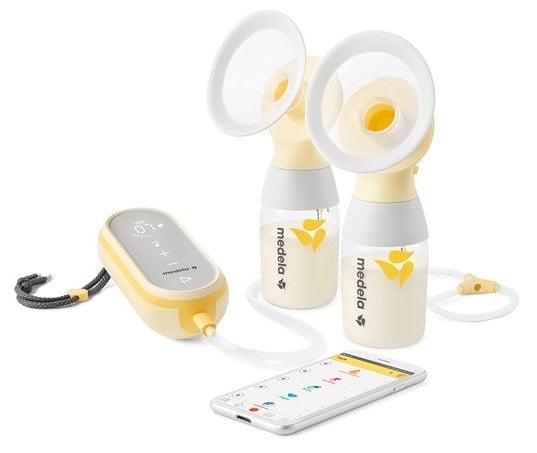
If you love the Medela Pump in Style but are looking for something even more portable because you’re a mom on the move, then the Medela Freestyle Flex is for you. It’s a double-electric, battery-powered pump that weighs less than one pound! Very impressive. It is one of the smallest and lightest breast pumps on the market. This pump can easily fit into your pocket, purse, or diaper bag, no problem. The rechargeable battery lasts about two hours, however, the suction decreases when the battery is low. It’s not as strong as the hospital-grade pumps and is not as quiet as the previous pumps listed. However, it gets the job done when you don’t want to manually pump your breast milk and don’t want to bring a large pump with you either.
The Medela Freestyle Flex is a closed-system pump that comes with Bluetooth connectivity to its MyMedela app as well as a USB charging cable. It has a backlit digital display, a timer, and it includes a memory feature to save your favorite expression suction patters.
4. Willow
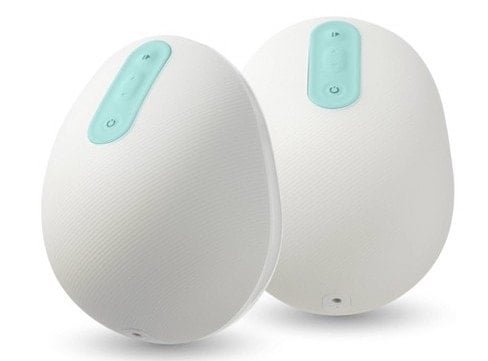
For moms who don’t want to worry about tubes, wires, or bottles and who prefer to pump hands-free, the wearable Willow Pump is a great option. It’s quiet and discreet so you can pump anywhere without being obvious at home or in public. All you have to do is insert them into your nursing bra and wear them under your shirt to pump.
I got to test the Willow pump out and I found it super convenient. At first, it can be a little confusing to get the right latch which is essential for a successful pumping session. However, their customer service is impeccable and helps you over the phone should you have any difficulties or questions. It also has no-spill technology and allows you to pump and store your milk in the same bag. This is great because it’s fewer steps for mom to do!
This double electric, battery-powered pump has a corresponding app that controls the suction (seven different levels) and keeps track of milk volume, pumping time, and previous pumping sessions. You can easily change the settings all on your phone. The battery also lasts all day.
Unfortunately, the Willow breast pump only works with breast cup sizes A-H. Also, because of the size of the Willow cups, the storage bags are only able to hold a smaller amount of breast milk than other pump containers. If you are a big milk producer, you may have to switch storage bags mid-pumping session. As for the price, it is more expensive. However, a portion of the fee may be covered by your insurance. An upgrade fee might be required depending on your insurance. But if your insurance doesn’t cover this pump, it is eligible for reimbursement under FSA/HSA. Also, the storage bags are also more expensive than standard breastmilk bags, and you can’t transfer milk from one bag to another nor can you reseal them.
5. Medela Symphony
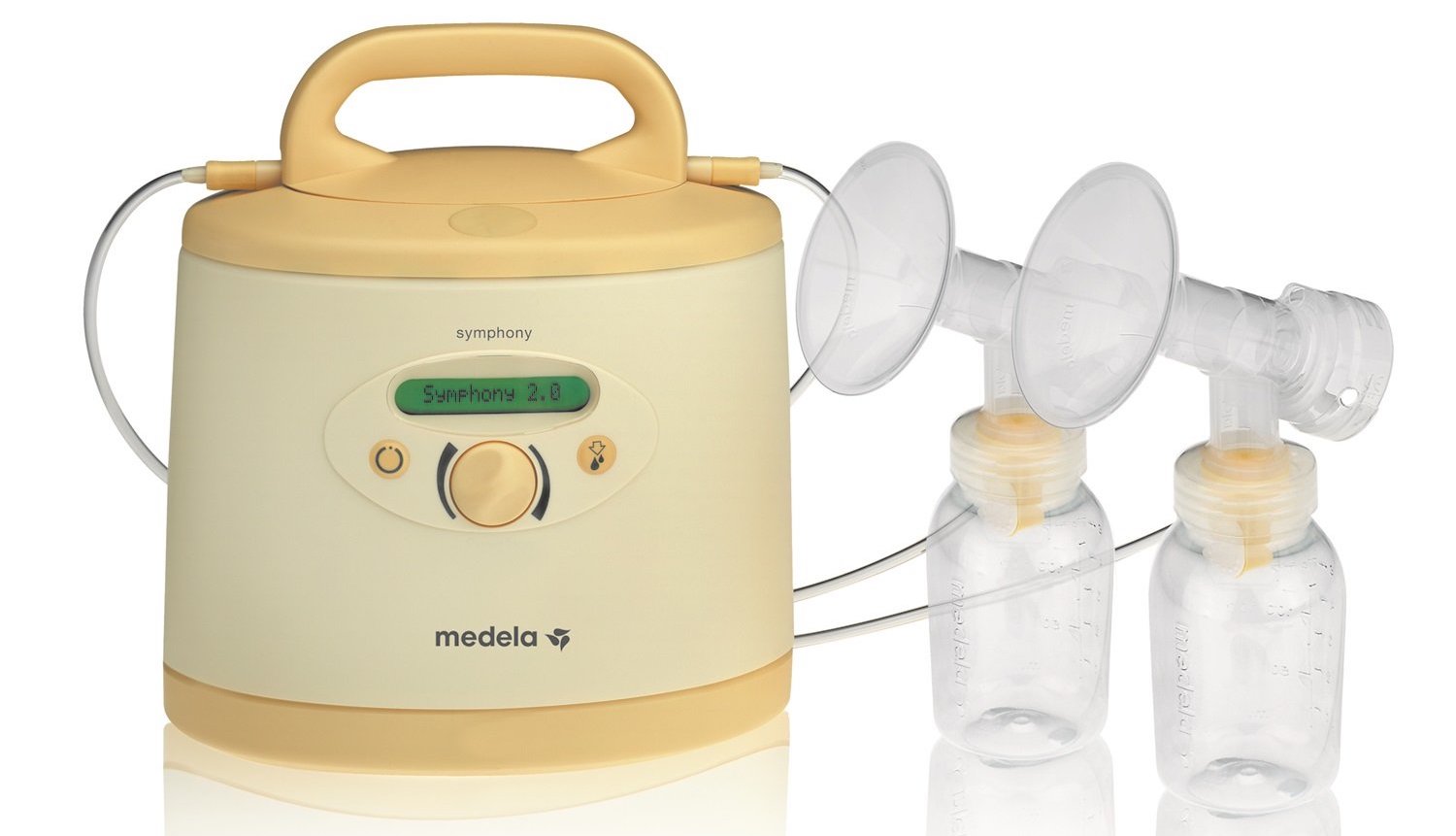
This double-electric, hospital-grade breast pump has been the gold standard of breast pumps for years. It’s the Bentley of breast pumps with a hefty price tag, but don’t worry! You can easily rent the Medela Symphony at your local hospital monthly to avoid the purchase price.
This pump has amazing suction that mimics a baby’s actual nursing pattern, it has great longevity, and its a well-sealed closed system pump. This is why hospitals feel comfortable renting them out to multiple mothers. I recommend this pump to mothers who have to pump exclusively, have trouble with milk supply, and to mothers who are trying to establish their breast milk for an adopted baby. It has a two-phase suction system that’s helped thousands of women achieve faster letdown and faster milk flow. I also like that it’s easy to clean and has a special system to prevent milk overflow.
Things that mothers need to know about the Medela Symphony is that you will have to purchase a pumping kit for the pumping parts (like tubing and bottles). The breast pump machine comes alone. Also, it’s large and heavier so it’s not the most portable and it requires to be plugged in while in use.
6. Haakaa
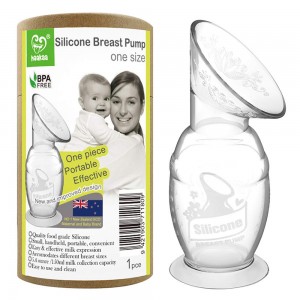
The Haakaa Silicone Pump is an affordable, one-piece manual pump that’s perfect for moms who need help starting a milk flow. There are so many things that I love about this pump:
- It doesn’t require hand pumping. All you need is to squeeze the pump and get a good suction to allow the natural letdown process flow.
- It’s wireless, tubeless, one-piece, and does not require a battery or power outlet.
- It’s affordable, lightweight, easy to carry, and store. (Perfect for travel.)
- Easy to clean and made from 100% food-grade silicone.
- It helps relieve engorgement when trying to reduce breast fullness or tenderness between feedings.
- It can collect milk that would otherwise go to waste: attach the Haakaa to the opposite breast that baby is nursing on to catch and save your let down milk. Amazing!
This breast pump is beneficial to every mother who is breastfeeding or pumping. I highly recommend it! And a suggestion, purchase the storage cover and suction base to avoid spilling or knocking over the Haakaa after pumping. You’ll be glad you did!
Final Thoughts
There’s a breast pump for every mother and every situation. What works for one mom might not work for another. Think about how often you will need to pump as well as how and where you will be using your breast pump. If it’s going to be more frequent, then a higher price tag double-electric breast pump might be the best breast pump for you. Think about the key factors that are essential for you and your situation and the right one will become more clear.













